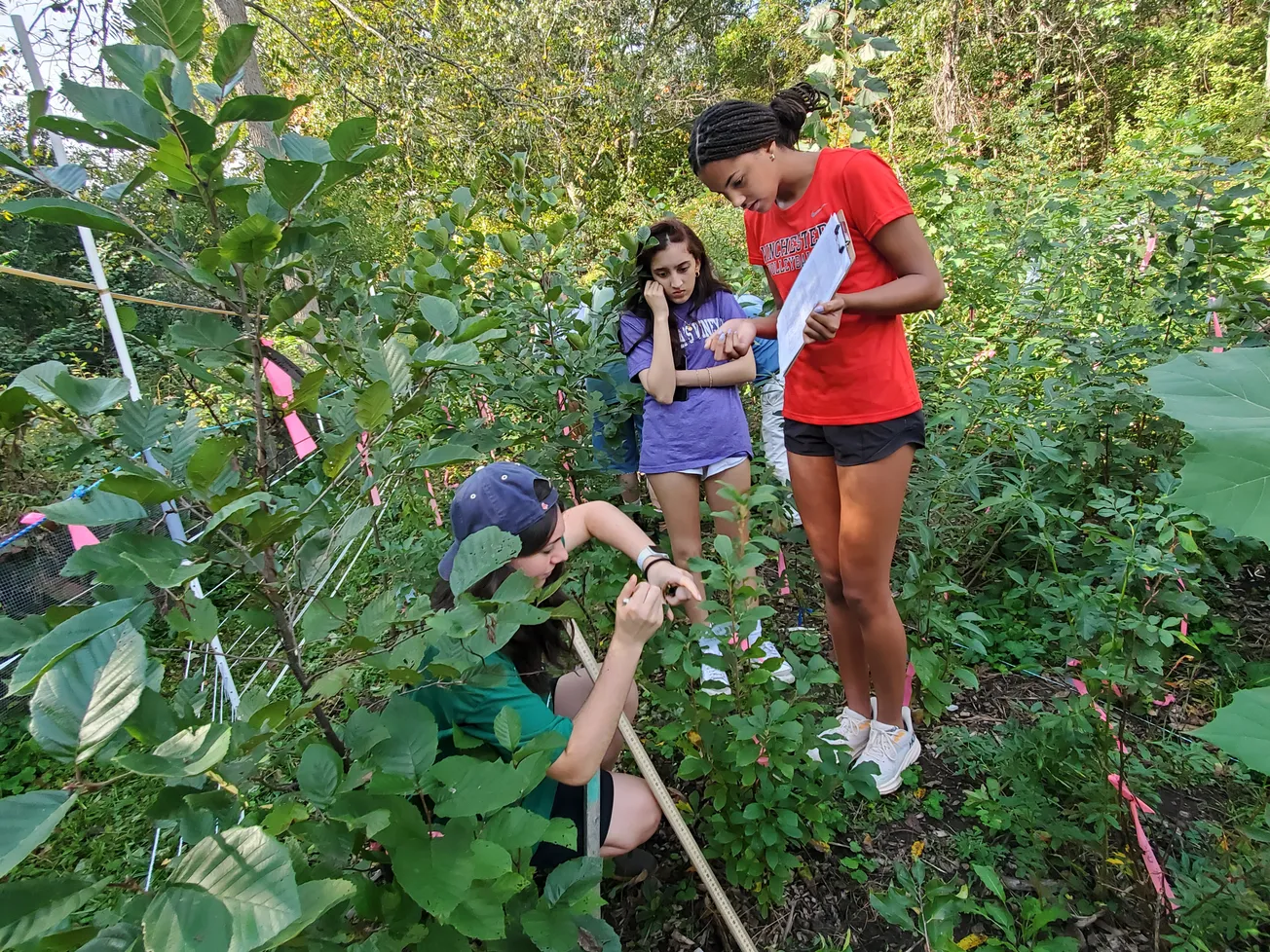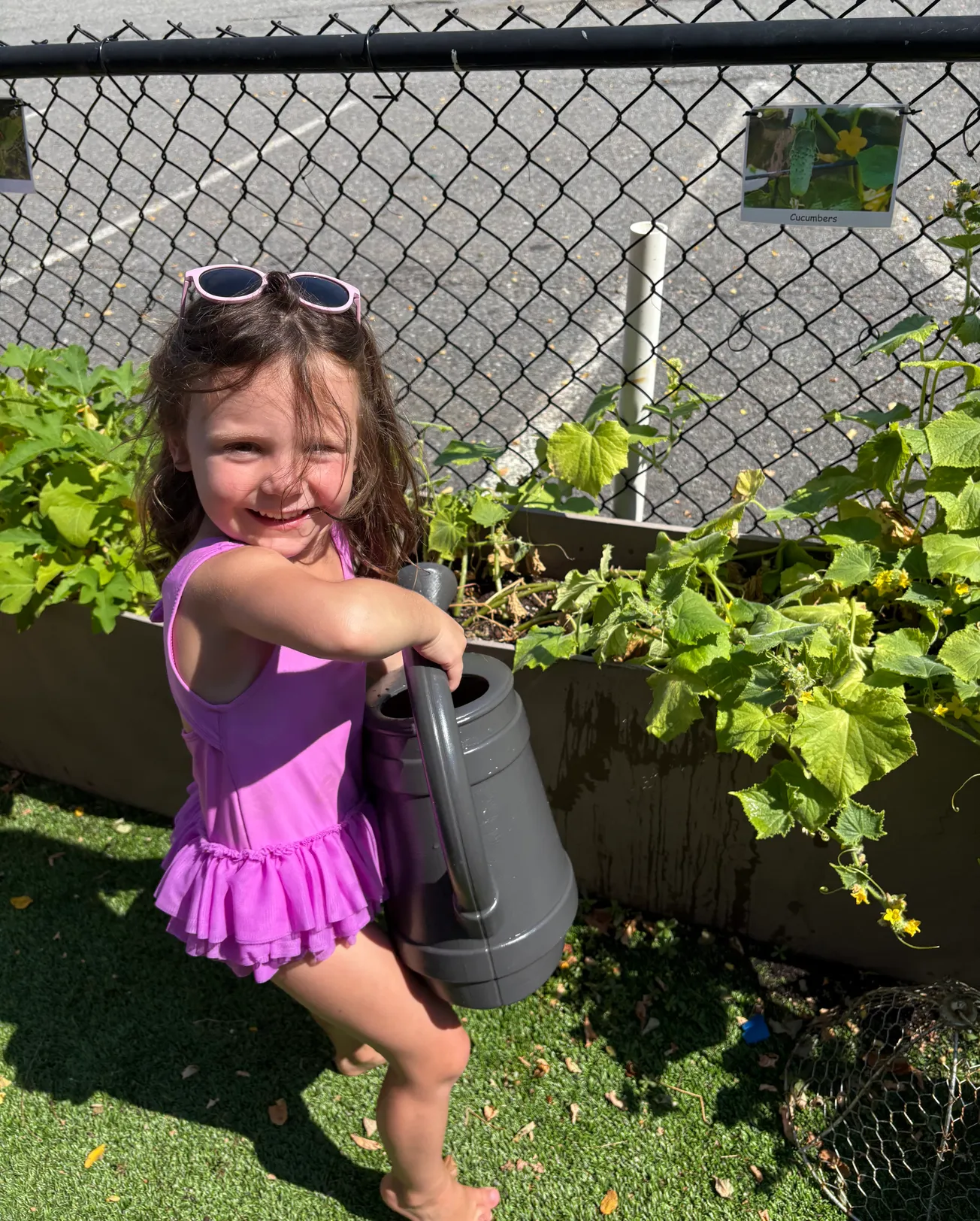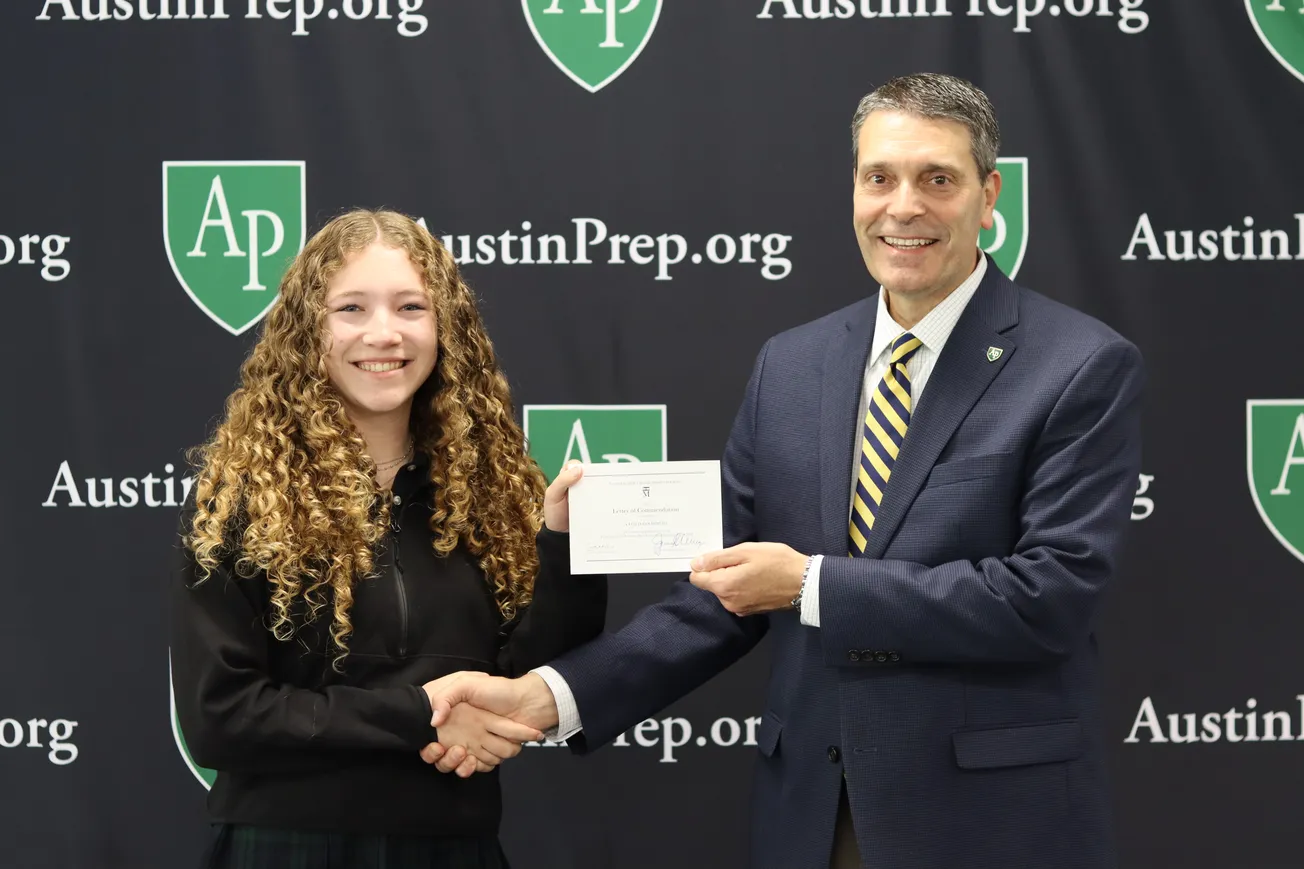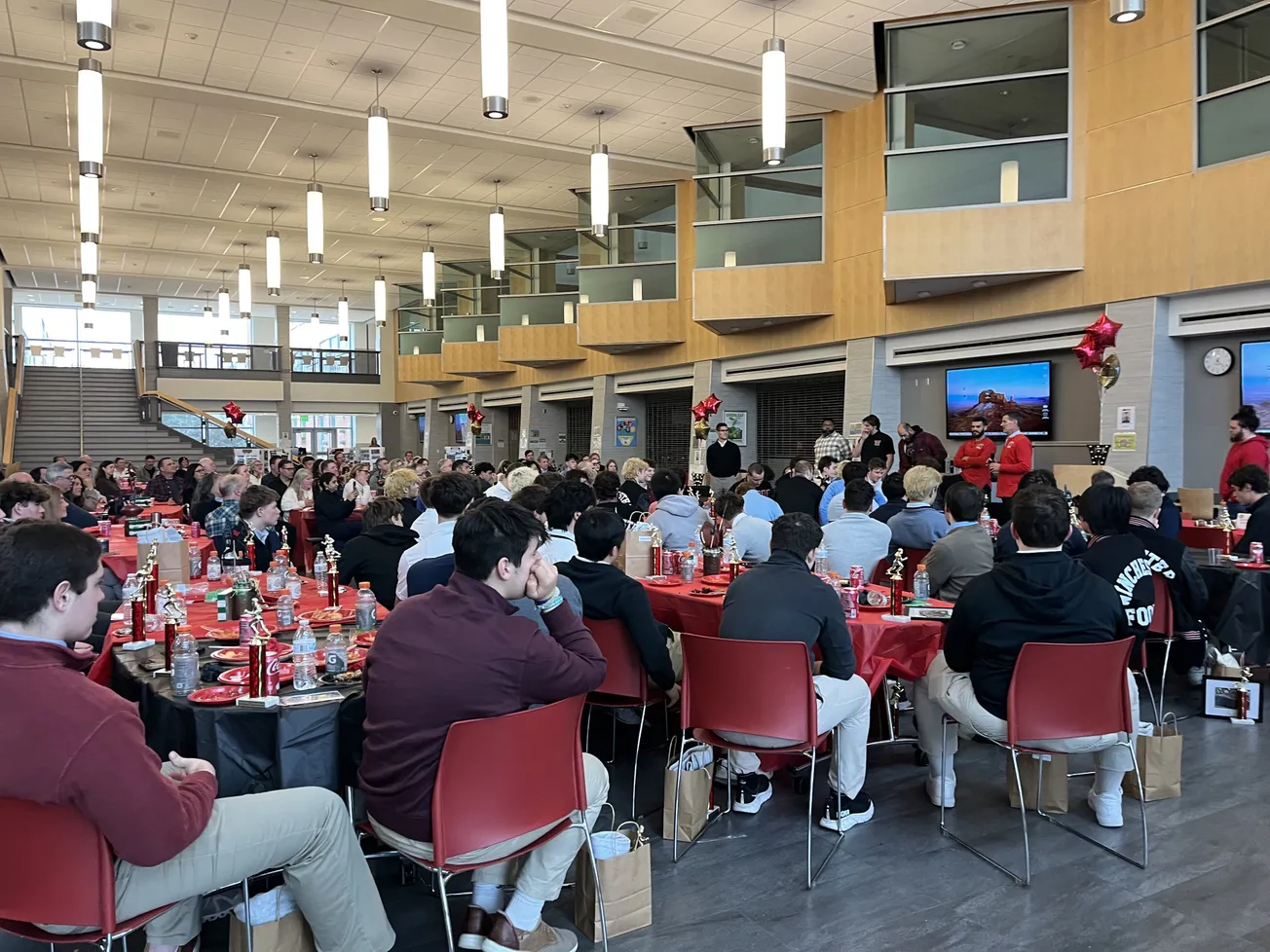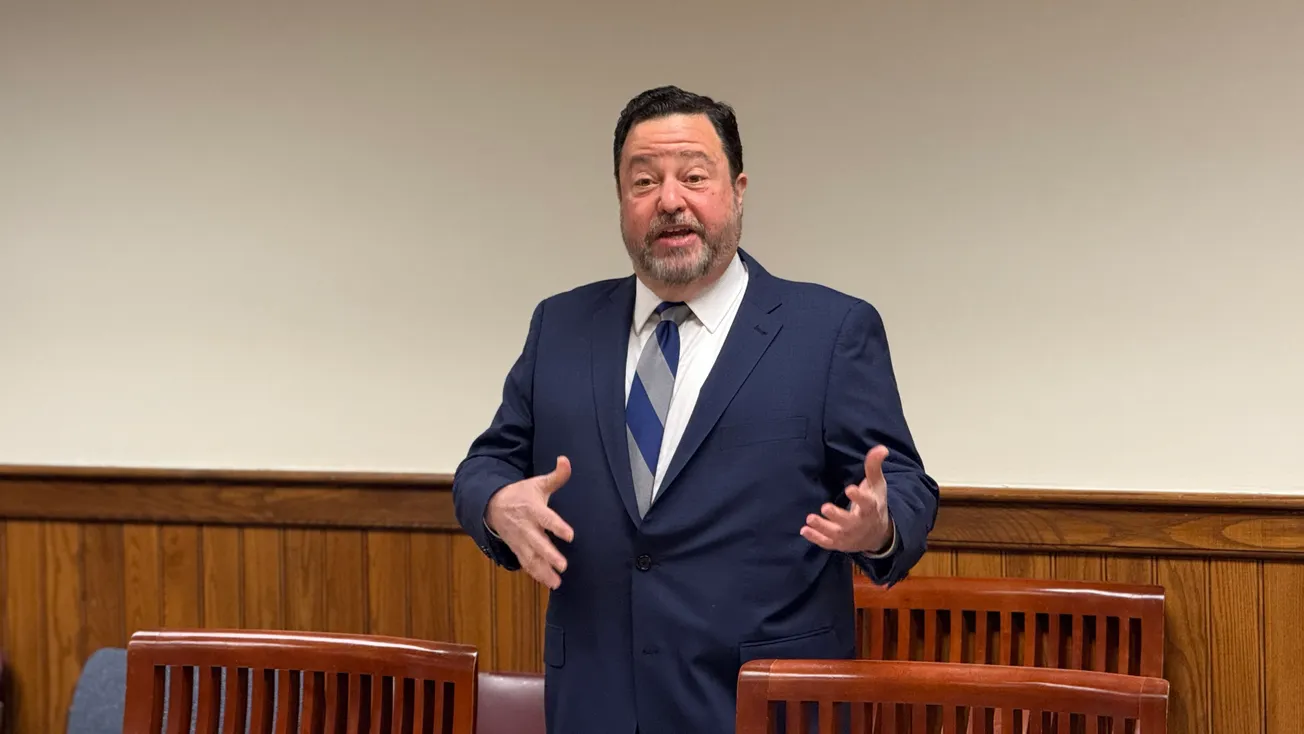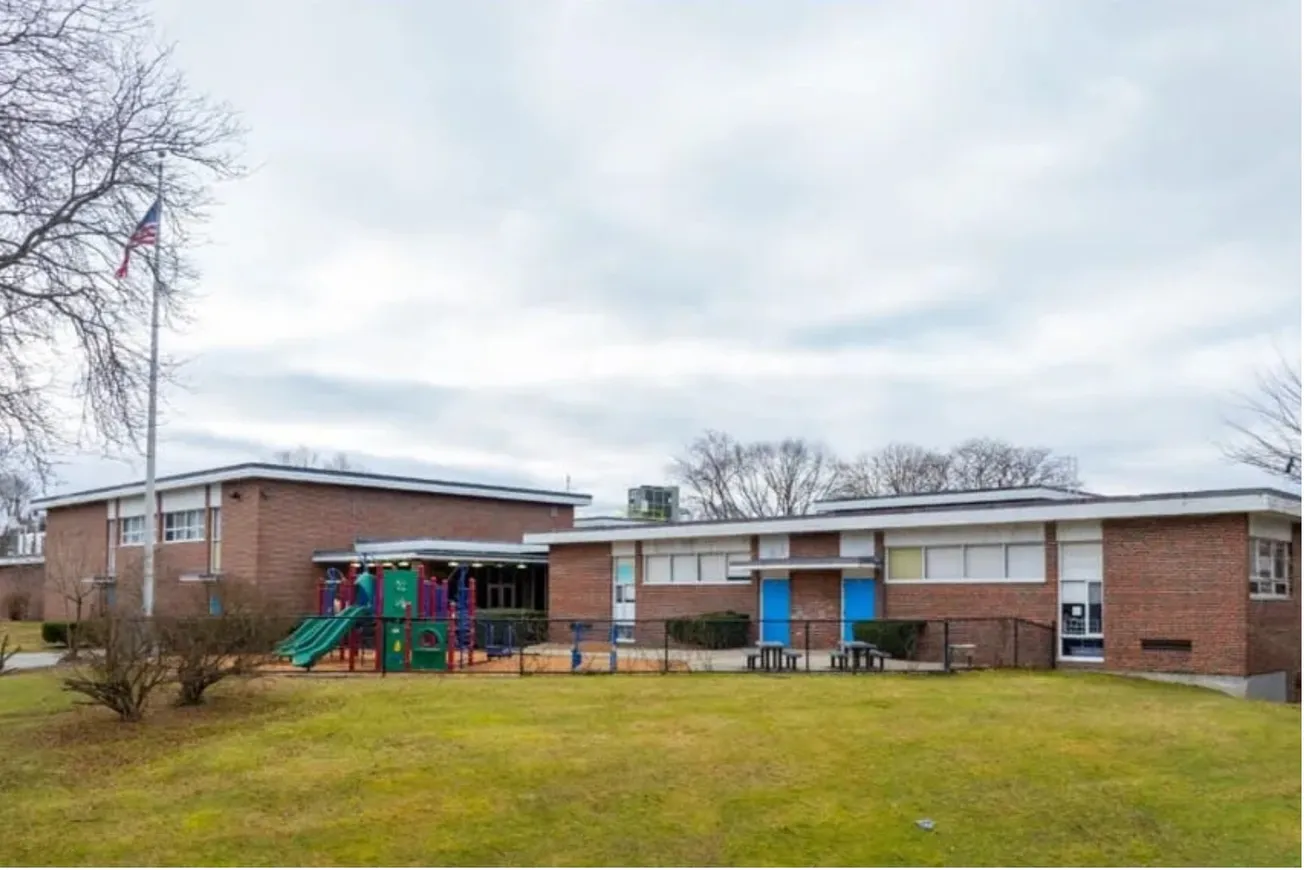Table of Contents
It’s a sunny morning and Wright-Locke Farm is busy: Kindergartners are visiting the chickens, residents are walking dogs and a group of parents is entertaining toddlers nearby.
But in a far corner of the farm, science is being done.
Classes of AP environmental science students from Winchester High School are swarming around the 1,000 plants at the Fast Forest site, counting, measuring and identifying what species have survived the winter.
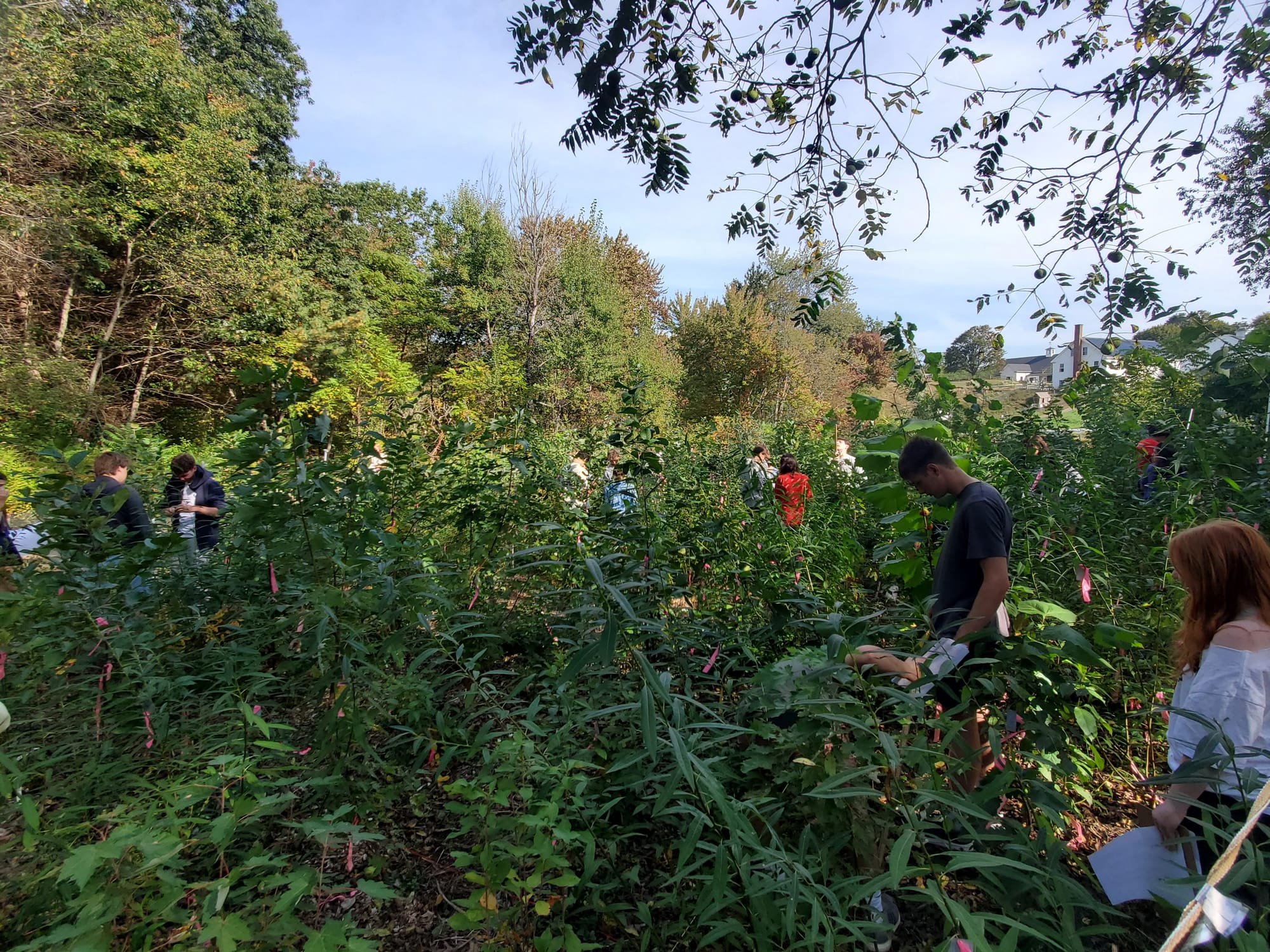
The Fast Forest is a partnership between the farm and Grow Local for the Planet to restore “low habitat value agricultural wetlands by the farm’s pond to a high habitat value mature forest,” according to the organization’s website.
The goal is to plant native plants in a forest to cover 5,000 square feet via the “Miyawaki method,” which accelerates tree growth to one-third less time than usual, or in this case 30 years instead of 150 years.
The method was named after Dr. Akira Miyawaki, a Japanese botanist and an expert in plant ecology who developed a technique to create dense forest with native plants.
“This is citizen science at its best,” says Ann Ritchie, director of science for grades 6-12 at Winchester Public Schools. “There’s nothing more local than this. These kids can come here the rest of their lives and say, ‘I helped out with the forest.’”
Ritchie says having students on-site helps them understand the reality of science.
“Field biology happens rain or shine,” she says. “It involves them in working with measuring tools and introduces them to the messiness of nature. It’s real field biology and you don’t often see that in high schools.”
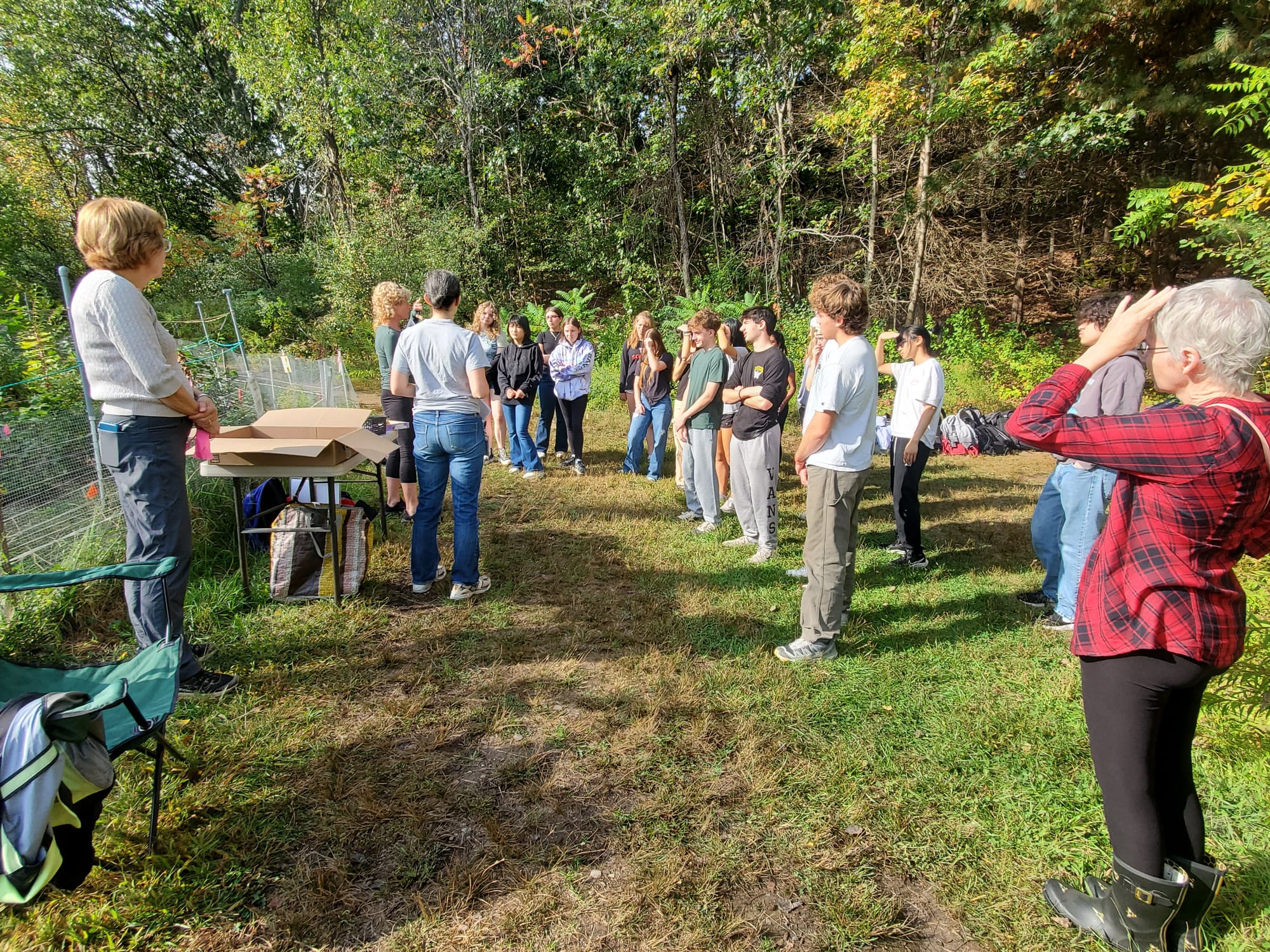
Ritchie says over the past few years, there’s been a growing interest in both college preparatory and advanced placement environmental science classes at WHS. So much so, the school hired an extra science teacher.
“You don’t want to turn kids away,” Ritchie says, of the effort to make the classes available to interested students. “These could be the kids who unlock solutions to our problems.”
Out in the field
Teachers Michael Marchand and Diane Duke are roaming the Fast Forest site, distributing worksheets and answering questions for students, who are thoroughly invested in their duties on this Sept. 30.
Marchand says this is his 14th year teaching AP environmental science, but it was Prassede Calabi who suggested his students help out with the Fast Forest project.
“She contacted me and we talked about a way to incorporate the AP students into doing a field study,” he says, adding the plant survey project has aided in building the curriculum.
“It’s real science,” he said, echoing Ritchie. “It’s messy, but they are out there collecting data and sometimes, things don’t go as planned.”
But, he adds, students really get into what they’re doing.
“They are applying science to real life,” Marchand says, “and they see the impacts.”
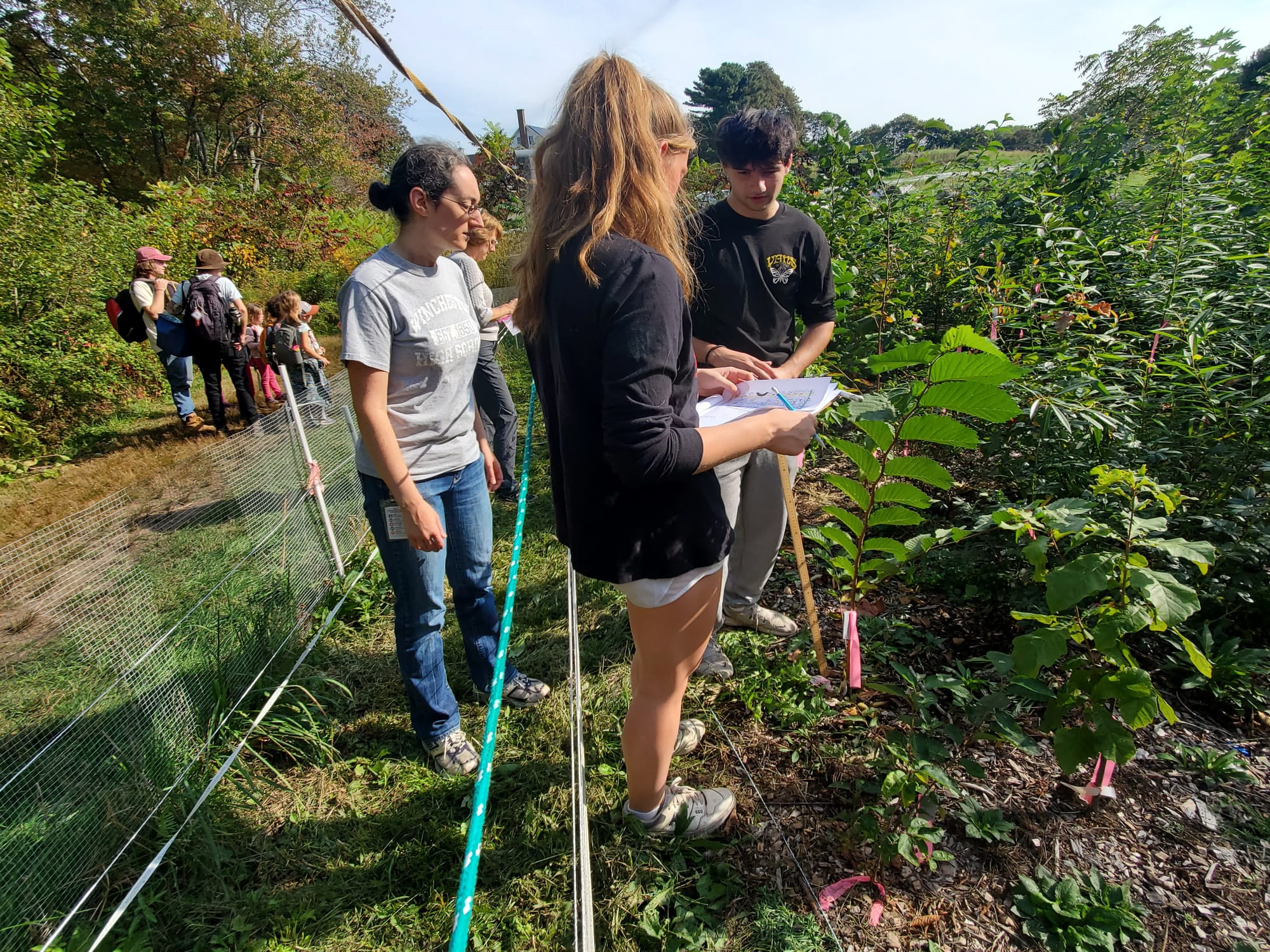
Marchand adds it’s great to see students interested in the world around them.
“One thing we stress is that we’re not trying to make everyone a scientist,” Marchand says. “But we need informed citizens and we need informed lawyers and informed politicians.”
He adds students last September placed 1,000 plants in place on the Fast Forest site, getting them situated for the volunteers who were coming for the planting event.
Now, he says, the job is to take a detailed survey of how the plants are doing and identify them. The data collected will be put into a spreadsheet, Marchand says, and future students will add to that field study during the coming years.
“The kids are excited,” says Duke, watching the students. “While we were waiting in the cafeteria to come on the field trip, a student who went last year walked by and asked how the forest was.”
Duke says while students enjoy the process of gathering the data, it’s sometimes difficult to interpret what it all means in a school setting.
“It shows them that when they bring their data back to school, things can get more complicated,” she says. “They really do get a taste of real science.”
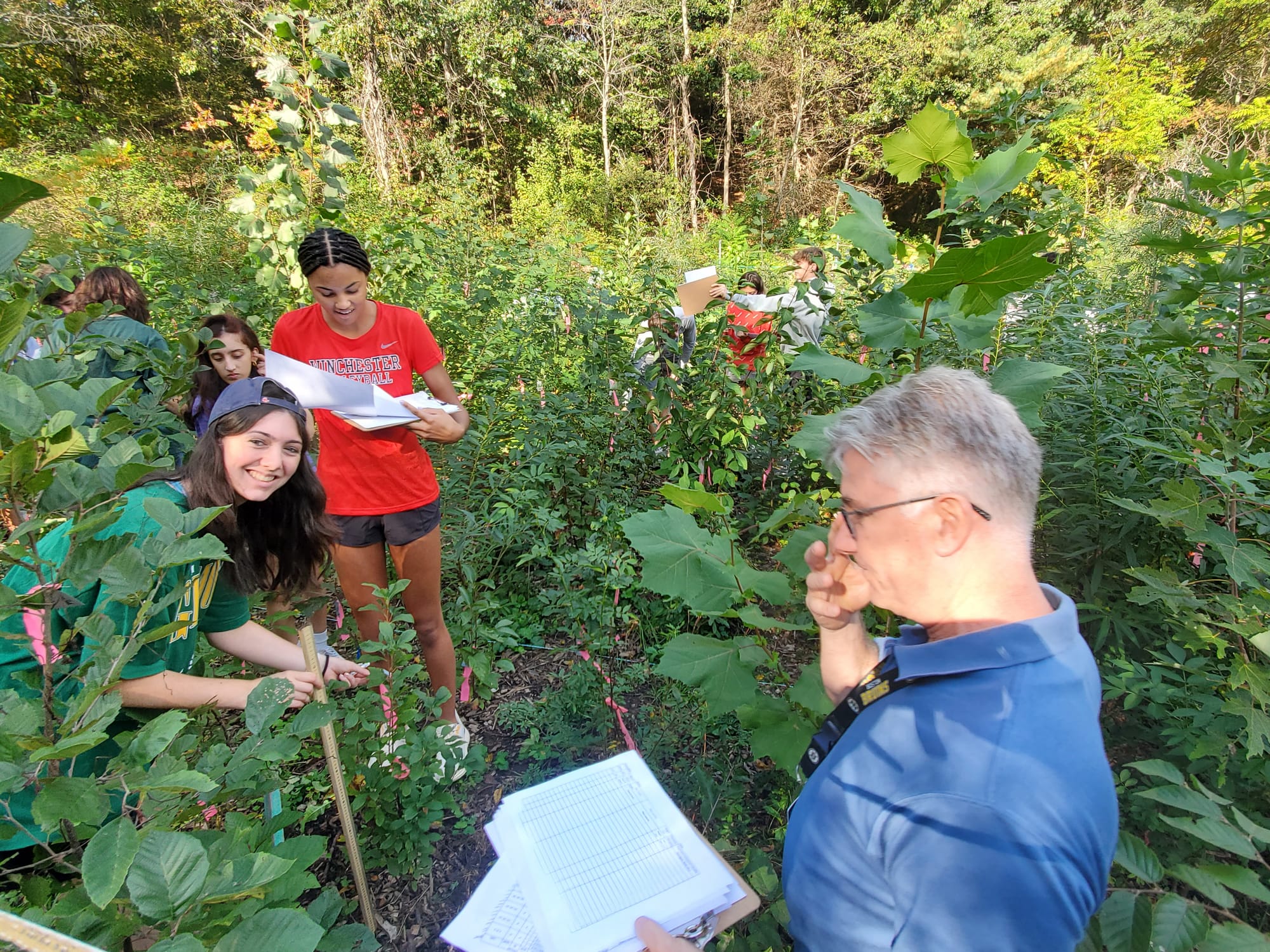
One group of students couldn’t agree more. Isabella Bogovich, Johanna Melhorn and Iyra Gangam are measuring plants in their grid on this Tuesday morning.
Melhorn, who lives near the Fast Forest, says she’s walked by the site many times, but just didn’t know what it was. Now, she’s in the midst of it and doing her part to survey how the 40 species did over the winter.
“It really brings your attention to real life,” she says. “Environmental science really impacts our daily lives.”
Fast Forest growth
Tracy Olson is one of the volunteers for the Fast Forest session this warm fall morning. As she watches the high school students tending to the business at hand, the Conservation Commission’s chair is thoughtful when asked about how the community has embraced the project.
“There’s such a thirst for nature,” Olson says. “People want to do something to combat climate change, but the problem is just so big. It’s hard for an individual to know what to do. This is something concrete, something that helps you be in nature and it’s good for you.”
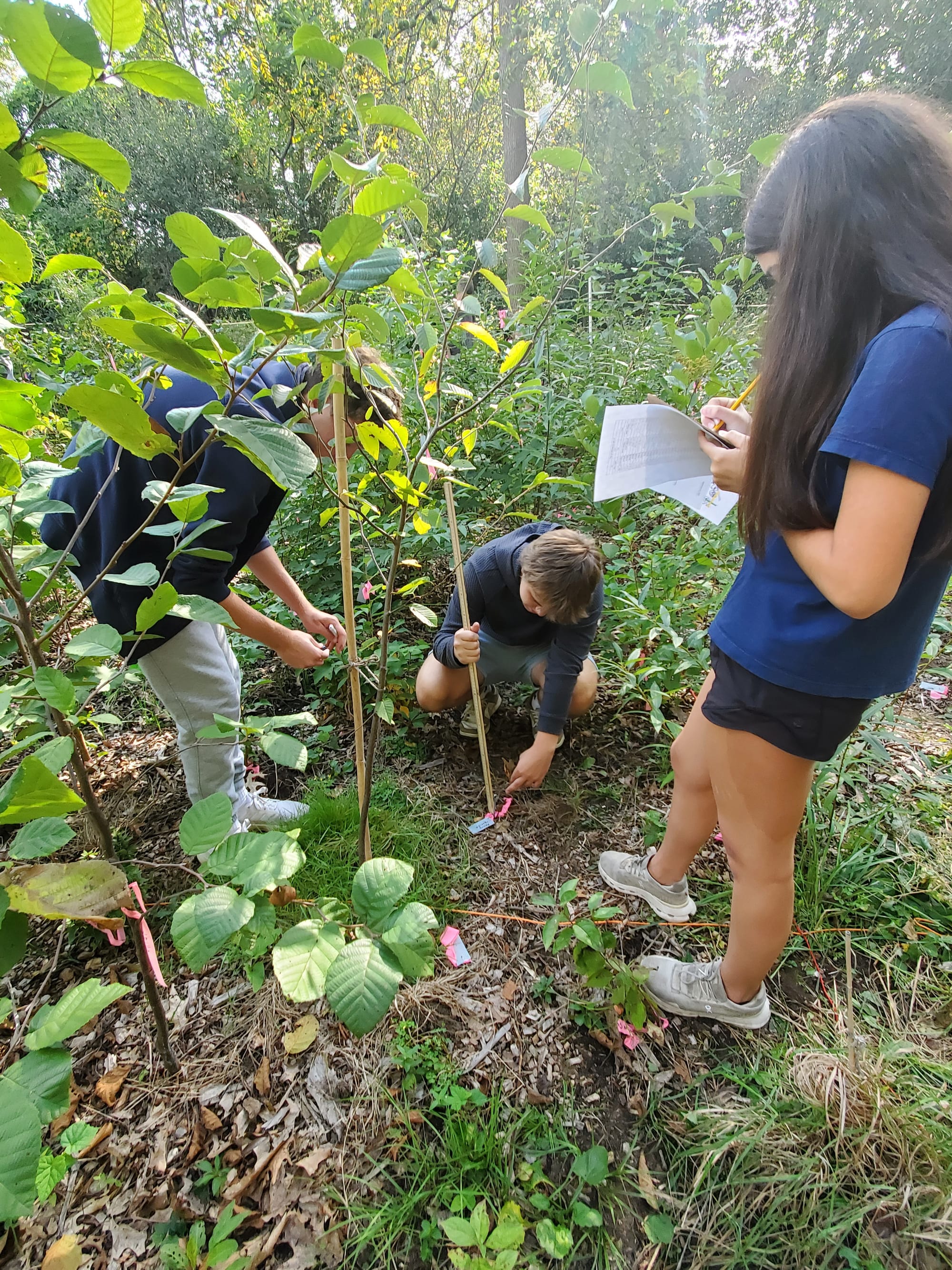
Olson says people have seen the growth just from last year.
“They see it and they understand the impact on future generations,” she adds. “It’s really addictive.”
Calabi agrees.
“People really do love green,” she says. “We love living things, we want to interact with that world.”
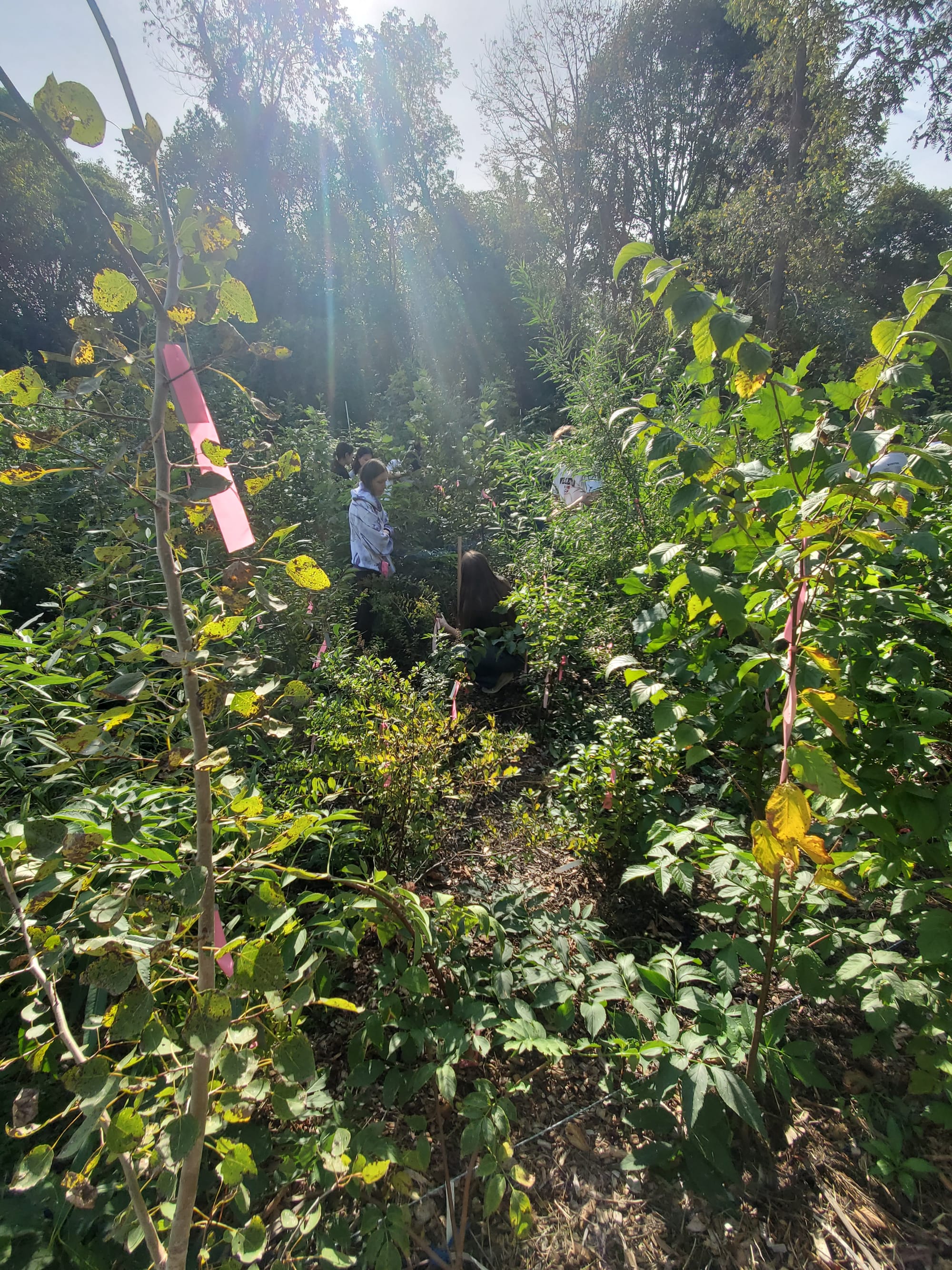
And, she adds, people are always looking for opportunities to get involved.
“I figure with these forests, it’s 51% forest and 49% community,” she says. “We had about 200 people here on planting day. Many of them stayed for hours in the pouring rain and mud.”
Nell Escobar Coakley has been a journalist for more than 30 years. She is co-founder and editor-in-chief of Gotta Know Medford and editor of Winchester News. She can be reached at editor@winchesternews.org.

